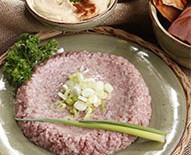Kahlil Gibran: Beyond Borders (Book Review)
Author(s): Jean Gibran
Release Date: December 20, 2016
Publisher/Imprint: Interlink Publishing
Pages: 464
Reviewed by: Lew Whittington
New York Journal of Books
Kahlil Gibran’s prose, visual art and advocacy for transcultural unity made him a citizen of the world during his lifetime, admired in the east and west. His most famous book The Prophet continues to speak to generations all over the world. A Lebanese-Syrian émigré, Gibran was a vocal proponent of an ecumenical world view that broke down geopolitical barriers as well.
Gibran and his extraordinary life are brought into full focus by sculptor Jean Gibran and her husband Kahlil G. Gibran, the artist’s namesake and cousin, in their incisive bio-history Kahlil Gibran: Beyond Borders. The authors present a remarkably dimensional portrait of Gibran, often letting Gibran’s voice from his letters or recorded conversations speak for themselves. Admirably they do not try to mask his personal or professional problems. With unprecedented access to letters, diary entries, and journals from contemporaries, the authors offer a three-dimensional portrait beyond Gibran’s image as an elusive mystic.
Gibran was born in 1883 in Basharri, Mount Lebanon, when his father was caught up in a political scandal. His father sent Kahlil, his mother, and his sisters, Marianne and Sultana, to live with relatives in Boston. They were among the Syrian-Lebanese émigrés arriving on Ellis Island at the turn of 20th century.
In Boston Kahlil was excluded from attending public school, but was noticed by a social reform organization for his intellect and artistic talents and one of the administrators wrote to Fred W. Day, a pioneering photographer and publisher, to instruct the young Kahlil.
F. W. Day took Gibran under his professional wing and introduced him to Boston’s artistic circles. Gibran was more than precocious; he was decisive about his academic and artistic life. He struggled to learn English and excelled in all of his early studies in the west, so successfully in fact, that at 15, it was his express wish to return to home Lebanon to study. The journey was an immersive emotional, intellectual, and spiritual reconnection for Gibran to his native country.
He shortly returned to Boston when his sister, Sultana, just 14, fell gravely ill and tragically she died while Gibran was en route to the U.S. He interrupted his career to help his family at this time after his half-brother, Peter, succumbed to tuberculosis and his mother also became gravely ill. Gibran’s deep love for his family drove him to organize his life accordingly, doing everything to protect and educate his sister Marianna in Boston.
Meanwhile, Gibran, still in his early 20s, was gaining a reputation as both an artist and a writer. He became seriously involved with Mary Haskell, an art patron and educator who ran a progressive school for girls in Boston. Haskell taught him to write in English and acted as his artistic agent at key points in his professional life.
They almost married, but Haskell eventually backed out because of their age difference and the untoward appearance of an older woman supporting a struggling artist. For his part, Kahlil eventually admitted that marriage would have probably ruined their relationship. He later confessed to Haskell that he felt “Sex things are temporary—always. And if we had had a so-called sex relation, it would have parted us by this time. For we would certainly have outgrown it. . . .”
Haskell had financed for him a better studio in New York in exchange, at Gibran’s insistence, for a series of paintings he planned. But even in his appreciation he was honest in challenging his patronage as he sought to establish complete personal and artistic independence in pursuit of larger, more spiritual goals. He was publishing many works in both Arabic and English, writing about social justice issues in his native land, and was a global advocate for Syrian-Lebanese émigrés.
The 28-year-old Gibran was so certain that he and Haskell were soul mates in all ways regardless of their status he made a will at this point leaving her and his sister Marianne his literary and artistic estate, with detailed instructions that also established a trust in his name to benefit his homeland.
The authors impressively detail the circumstances and inner world of Gibran’s creative journey writing The Prophet. Many people know Gibran’s art from his illustrations in The Prophet but Gibran became a sought after portrait painter and among the luminaries who posed for him were W. B. Yeats, Claude Debussy, Auguste Rodin, Sarah Bernhardt, and Carl Jung, among many others as well as society and industry figures in Boston and New York. His nude studies, often both spiritual and earthy, by their nature challenged religious iconography. The book contains many in text plates of the artist’s charcoal or ink illustrations and transfers of Gibran paintings.
What biases the authors may have harbored as relatives of Gibran, their authority and objectivity in this multifaceted portrait impresses throughout—a century after Kahlil Gibran emerged not only as writer and artist, but an advocate for peace and voice for Syrian-Lebanese refugees. It is haunting, indeed, to read his inspiring words as Syria is being torn apart by civil war, genocide, and terrorism.








